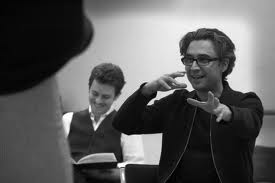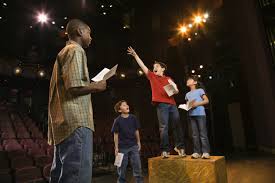
 In Part I, of Teaching Directing: Two Different Approaches and Finding a Balance, we focused on the benefits of having directing students work from the outside in. That is, focusing on text, directing skills and techniques, and proper interpretation of material to learn the basic of stage directing.
In Part I, of Teaching Directing: Two Different Approaches and Finding a Balance, we focused on the benefits of having directing students work from the outside in. That is, focusing on text, directing skills and techniques, and proper interpretation of material to learn the basic of stage directing.
There are numerous benefits to this approach, including the fact that it get a new director focused on relaying a vision that is born from the text, a premise, or a specific aspect related to technique, rather than focusing on the director applying their personal experience to what they are directing, and, thus making the prjoject about themselves.
However, directors do bring a lot of themselves to the process, and their insights, which certainly come from their life experience, are one of things that sets one production of a play apart from another. In Part II of this blog, we consider having students work from the inside out.
The Inside Out

By the inside out we mean that directors start with their own life experience and use that in creating a piece, perhaps devising a scene or a play, or in interpreting the work of another, or in helping an actor discover their character. An in-class exercise that starts with a director remembering one of their dreams and creating a short group of scenes around that dream is one example of how this might be done.
Reasons for the Inside Out Approach
First of all, the inside out approach acknowledges that every director being something unique from their own life to the directorial process. It also helps to open up communication in and through which as director may better connect with the text of a play and with the other artists involved in the process. It also gets directors understanding that creativity is born in them, and that they really do bring a lot to the table when it comes to play interpretation and the implementation of an artistic production.
How It Works

In terms of teaching directors, students utilize the inside out approach by finding the genesis for their concepts for a specific exercise within themselves and from their own lives. They often take real life events that they have experienced and put them on stage, making them into a fiction. They are connecting their real lives to the creation of art and beginning to understand in a very direct fashion how their lives can be used to enrich a theatrical piece, and the lives of those who encounter it.
Exercises that focus on loss, a dramatic event, individual artistic taste, and dreams can all be used with the inside out approach. When coupled with exercises that use the outside in method, directors begin to make connections in new and exciting ways.
Finding Insights and Connections
Thus, in also using the inside out approach, you want to make sure that your directors are finding connections to the piece that will in some way illuminate it rather than obfuscate it. If they are utilizing exercises that are generated from their own experience, be sure to discuss how the techniques used may be utilized in an illuminating and helpful manner when they are directing text that another person has written.
The inside out approach can be an amazing tool when used appropriately. Appropriateness is dictated by many factors, including the type of piece, whether it is devised or grounded on text created by someone else, such as a play, and the intention of creators.

 Random Item
Random Item